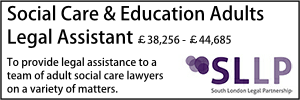The Children’s Wellbeing and Schools Bill: an overview
- Details
Katharine Elliot, Claudia Hyde and Siân McGibbon set out the key provisions in the far-reaching Children’s Wellbeing and Schools Bill.
The government recently tabled its flagship new education legislation in the form of the Children’s Wellbeing and Schools Bill. The Bill’s proposed amendments to the education system range far and wide, covering matters from teacher pay and academisation to school uniforms and breakfast clubs. This article considers some of the most significant proposals in depth.
Home-schooling
Background to the proposed Bill reforms
For many years, the number of children whose parents have decided to educate them at home – either entirely or partly under an arrangement known as ‘flexi-schooling’ – has been increasing.[1] Parents’ reasons for homeschooling their child(ren) are varied, including a desire to ensure their education is aligned with their personal views (religious or otherwise), dissatisfaction with the schools available in their area (particularly where there is a concern that their child’s needs are not being met), or where the relationship with the child’s school has broken down, for example where there are disputes about a child’s behaviour.
Unfortunately, the increase in homeschooling or ‘elective home education’ has been mirrored by a parallel growth of evidence that many such children are not receiving a suitable education.[2] In some cases, concerns have also been raised that these children are exposed to heightened risks of violence and abuse, leading in the worst cases to life-long mental and physical harm and, tragically, death, which outcomes might have been avoided had children been attending school and been seen regularly by education and other professionals.[3]
Alongside the question about registration of children not in school (see below), this has led to debate as to whether new powers should be provided to enable local authorities, who are tasked with safeguarding vulnerable children in their communities, to step in to prevent elective homeschooling where there are concerns that it will expose children to the risk of harm. The proposed powers in the Bill are the latest iteration of what these powers might look like.
The status quo
Parents are responsible for ensuring that their children of compulsory school age – broadly speaking between the ages of 5 and 16 – receive efficient full-time education that is suitable to their age, ability, aptitude and any special educational needs or disabilities (generally referred to as ‘SEND’) either by regular school attendance or via other means, such as homeschooling (section 7 of the Education Act 1996 (“EA 1996”)). Other than the requirement that the education is “suitable” (which is assessed on a case-by-case basis), there are no legal requirements as to what a homeschooled child must be taught (i.e., there is no requirement that they be taught in line with the National Curriculum). The responsibility for funding the child’s education and decisions about whether or not they should be entered for public exams also rest with the parent(s). There is currently no general requirement to register a child as being home-schooled or to otherwise notify the relevant local authority (“LA”) of the parents’ decision,[4] albeit local authorities are able to operate voluntary registration schemes to help them discharge their obligation under section 436A EA 1996 (as detailed below), nor is there any requirement that homeschooling arrangements must be inspected (for example by the LA or by Ofsted).
This parental responsibility for education runs alongside the parallel general principle that children are to be educated in accordance with the wishes of their parents, so far as compatible with the provision of efficient education and the avoidance of unreasonable public expenditure (section 9 EA 1996). This is a principle to which the Secretary of State and local authorities are required to have regard when making decisions about education. Public body decision-makers are also required to have regard to Article 2, Protocol 1 of the European Convention on Human Rights (“A1P2”), which provides that: “the State shall respect the right of parents to ensure such education and teaching is in conformity with their own religious and philosophical convictions.”
This current system means that the role and powers of a local authority (“LA”) in homeschooling cases are limited to ensuring that parents are meeting their duty to provide a suitable education under section 7 EA 1996, both in the context of meeting their wider safeguarding and education obligations towards children in their communities[5] and their specific obligation under section 436A EA 1996 to make arrangements to enable them to establish (so far as it is possible to do so) the identities of children in their area who are of compulsory school age but are not registered pupils at a school and who are not receiving a suitable education (as defined in section 7 EA 1996) otherwise than at school. How an LA meets these obligations is a matter for them, but they are encouraged in Government guidance to make sure any arrangements are proportionate and “do not seek to exert more oversight than is actually needed” where suitable education is being provided by parents.[6] It is recommended that LAs consider making contact with parents at least once a year to discuss the education being provided.
If an LA is concerned that a child does not appear to be receiving suitable education at home and informal attempts to resolve the matter have not been successful (e.g., meeting with parent(s) to discuss concerns and offering support to resolve them), it can serve a notice under section 437(1) EA 1996 on the parent(s) requiring them to provide information about their child’s education. If the LA is not satisfied that the education is suitable – whether because of the information parents have provided taken together with other available evidence or because there has been no response to the notice – and believes the child should attend school, the LA must serve a school attendance order (“SAO”) on the parent(s) requiring the child to attend a specific school. If the child is not sent to school and the SAO is not otherwise brought to an end,[7] the LA has two options: (i) to prosecute parents for non-compliance with the SAO (section 443 EA 1996); and/or, (ii) to seek an education supervision order (“ESO”) under section 36 of the Children Act 1989, which gives LAs a formal supervisory role in the education of the child in question, albeit with due regard still required to be paid to the parents’ wishes and feelings.[8] If parents are convicted for breach of the SAO but still do not send their child to school, the LA can then pursue the ESO route and/or a parenting order[9]. If parents do not comply with the ESO, the LA can consider seeking a care order under section 31 CA 1989, which transfers parental responsibility (including the rights and responsibilities under the EA 1996) to the LA. The Government’s position has been that care orders should be a remedy of last resort reserved for the most egregious cases of parental behaviour.[10]
LAs are encouraged by the Government to publish clear and accessible policies as to how they will approach the issue of homeschooling and to ensure that adequate processes and resources are put in place to deliver on their obligations. They are also encouraged to make arrangements with other public bodies, in addition to schools, who may come into contact with children, such as health bodies and GPs, to flag children about whom there are concerns.[11] When inspecting Las, Ofsted will review their performance in this area.[12]
The limitations of this current approach are well-established, including: (i) the lack of differentiation for vulnerable children, such as those about whom there are safeguarding concerns or who have SEND; (ii) the lack of clarity as to when action should be taken by an LA under its safeguarding powers or its education law powers when there are concerns about a homeschooled child, particularly because of the inherent flexibility in the ‘suitability’ test to be applied; (iii) the severe shortage of staff and resources within LAs to identify and investigate cases of potential concern meaning it can take months if not longer for even the informal process of exploring home education provision to get going; and, (iv) the time and cost implications to LAs of pursuing remedies through the courts in complex cases, whether in criminal or family proceedings, and the lack of court time and resources to consider such cases quickly.
A consultation carried out in 2019 resulted in proposals by the then Conservative government for compulsory registration of children not attending school and a duty on LAs to provide support for parents who choose to home educate. While LAs were broadly in favour of the proposals made at the time, parents were generally not in favour because of the perceived intrusive nature of such measures into their decision-making for their children. Attempts to introduce measures along these lines fell through in 2022 and 2023.[13]
What does the Bill propose?
In addition to the introduction of compulsory registration dealt with below, the Bill proposes the following reforms to the status quo (in the main via amendments to the EA 1996, supported by secondary legislation as required):
- Creating a requirement for LA consent for a child to be homeschooled (discussed below);
- Creating a power whereby, if a child is subject to a section 47 CA 1989 enquiry or is on a child protection plan and is already being homeschooled, the LA can review whether homeschooling is in their best interests and, if it is not, require their attendance at school (Clause 26);
- The introduction of changes to the SAO process, including: (i) statutory timeframes for issuing and processing SAOs; (ii) making the process the same for academies and maintained schools; (iii) making it easier to prosecute parents for persistent breaches of an SAO, where the parent has at some point complied[14]; (iv) increasing criminal sanctions for breach of an SAO up to a maximum fine of £2,500 and to include the possibility of a custodial sentence (Clause 26);
- Giving LAs greater investigative powers within the SAO process, including the right to request a visit to the child’s home and to see the child when assessing whether the education provided is suitable. Refusal to allow this by a parent will be a factor in deciding whether to allow a child to be homeschooled (Clause 26).
In the Convention Memorandum to the Bill, the Government acknowledges that certain of the measures proposed may engage parents’ Article 8, 9 and A2P1 rights, including when taken together with Article 14, given the evidence that religious and other minority groups often prefer homeschooling. However, it is stated that these are necessary and proportionate in the interests of protecting the right of a child to education under A2P1 and to properly safeguard children from harm, in terms both of abuse and lack of access to a suitable education.
Given the early stages of the Bill, it is not possible to say whether these measures will meet the same fate as their predecessors and fall before they can be voted on. What can be said is that any debate will revisit the same issues as before, in particular the need to achieve an appropriate balance between safeguarding children and the rights accorded to parents in legislation and under the Convention, all of which will be played out in a practical context where the existing staffing and resource constraints which make the current system so difficult, both within LAs and in the court system, show no sign of improving.
Children not in School
Part 2 of the Bill (clauses 24-29) makes provision for children not in school - a growing group which, according to the Department of Education, now includes over 120,000 children.
Clause 24 inserts a new section 434A into EA 1996 to impose a requirement for local authority consent to withdraw certain children from school. The requirement applies where the child is registered at a school in England; is of compulsory school age, and; either attends a special or independent school (‘Condition A’) or is subject to ongoing enquiries or action under section 47 CA 1989 (‘Condition B’). In such cases the authority must refuse consent where it considers that it would be in the child’s best interest to continue to attend school, and / or where it considers that no suitable arrangement has been made for the child to be educated outside school. On receipt of an application the local authority must make a decision promptly (unless it has previously refused consent following an application made within the last six months, in which case the authority is not required to make a further decision on the subsequent application). The precise mechanics of the process will be detailed in regulations made under the new provision, which amongst other matters will require that in cases where local authority consent is required a school should not remove a child from its register until it has received notice that consent has been granted. A parent may challenge the decision of the local authority to grant or to refuse consent may refer the decision to the Secretary of State.
Clause 25 introduces a duty to register children not in school, as proposed in new sections 436B and 436C EA 1996. Local authorities are required to maintain a register of all children of compulsory school age who live within their area, who are either not registered at a school or who are registered but are absent from school (whether because the child attends school part time, or because the school has made provision for the child to be educated outside school, or has agreed that the child will be absent for some or all of the usual school day). The register is required to include various categories of information about the child, any parent from whom they receive education, and any other person from whom they receive education, as well as “any other information the local authority considers appropriate”. The Secretary of State can demand to be provided with “information of a prescribed description” from the register, and may in turn provide that information to a prescribed person where it is “appropriate to do so for the purposes of promoting or safeguarding the welfare of” the child or any other person under 18. The local authority may also choose provide information from the register to Ofsted, or to a person listed in section 11(1) CA 2004.
National Curriculum requirements
One of the most significant provisions of the Bill is found in Clause 41, which makes provision in relation to academies’ curriculum requirements.
In its present form, section 1A(1)(b) of the Academies Act 2010 (“AA 2010”) sets out the requirements to be met by an educational institution in order for it to qualify for academy status. Section 1A(1)(b) provides that an educational institution will meet the requirements if, inter alia, it has a curriculum satisfying the requirements of section 78 of the Education Act 2002 (“EA 2002”) – in other words, a “balanced and broadly based curriculum”. By contrast, maintained schools in England are required by section 80 EA 2002 to follow a “basic curriculum”, known as the National Curriculum for England. According to the most recent data available from the Department for Education, 82% of secondary schools and 43% of primary schools in England are academies or free schools, with 56% of all pupils attending an academy.[15] Thus, the majority of pupils attend schools that are not presently required to teach the national curriculum.
Clause 41 of the Bill amends section 1A of the Academies Act 2010 so as to require academies to provide a curriculum that:
- Satisfies the requirements of section 78 EA 2002, and
- Includes the National Curriculum.
The absence of a requirement to follow the National Curriculum has been a controversial feature of the academies and free schools legal framework since its inception, and several key education stakeholders, including teachers’ unions, have long called for reform. However, the effect that clause 41 could have is difficult to gauge: it is not known how many academies presently make full use of their curriculum autonomy and elect not to follow the National Curriculum. This is likely to be elucidated following the publication of the government’s Curriculum and Assessment Review, expected in 2025.[16]
Safeguarding provisions
Schools are often best placed to identify and act on warning signs that a child is in need of support. Clause 2 of the Bill amends section 16E of the CA 2004 to include childcare and education agencies in safeguarding arrangements. Clause 3 adds a new section 16EA to the CA 2004, to make provision for multi-agency child protection teams “for the purpose of providing support to the local authority in connection with the discharge of its duties under section 47 of the CA 1989 (duty to investigate where child at risk of significant harm)”. The multi-agency team will be required to include at least one person “with experience in education in relation to children”, in addition to at least one social worker, registered health professional, and one police officer. Clause 4 inserts as a new section 16LA CA 2004 a new duty to share information for the purposes of “continuity of information for safeguarding and welfare purposes”. The effect of this provision is that information relevant to safeguarding and promoting the welfare of a child must be shared with designated persons, including “a person who is a designated childcare or education agency” in so far as the disclosure “may facilitate the exercise by the recipient of any of its functions that relate to safeguarding or promoting the welfare of children”.
The interaction between the duty and data protection legislation is likely to be an area of some complexity in practice; clause 4 provides that disclosure pursuant to the duty “does not breach any obligation of confidence owed by the person making the disclosure”, but that it nevertheless does not “require or authorise” disclosure in contravention of data protection legislation. The duty must however be “taken into account” in determining whether disclosure is permitted by data protection legislation. The introduction, by a new section 16LB CA 2004, of a requirement to include a ‘consistent identifier’ when processing information about children will facilitate such disclosures.
Duty to co-operate
Clause 47 of the Bill introduces a new overarching obligation on mainstream schools and local authorities to co-operate in ensuring that sufficient schools are available in local authority areas. Clause 47 proposes to insert a new section 19B into the Education Act 1996 (“EA 1996”):
“19B Schools to co-operate with local authority in securing adequate provision (England)
- This section applies where it is reasonably foreseeable that decisions about a relevant school in England will affect the ability of a local authority in England to discharge its duties under section 14 or section 19(1).
- The responsible body for the school must co-operate with the local authority with a view to achieving the objective in subsection (3).
- The objective is that decisions about the school will result in the school contributing, so far as is reasonable, to the effective discharge by the local authority of the duties concerned.”
EA 1996 section 14, known as the “sufficiency duty”, provides that local authorities must secure that sufficient primary and secondary school places are available in their areas. Section 19 provides in similar terms in relation to pupil referral units. Clause 47 proposes to build upon this obligation by requiring the responsible body for a school (being, in most cases, either the proprietor or governing body of the school) and the relevant local authority to cooperate, principally in admissions and place planning decisions.
While non-statutory guidance already encourages such co-operation to take place,[17] the Bill proposes to place this on a statutory footing. The Explanatory Notes to the Bill set out the rationale for the proposed change in the following terms:
“Whilst there are specific ways in which local authorities and schools are required, by legislation, to work together and expectations to co-operate set out in non-statutory guidance, there is not an overarching statutory requirement for local authorities and schools to co-operate on admissions and place planning. As a result, co-operation and collaboration is not always seen as a priority and, in some cases, schools can act in isolation and without considering their local area’s needs. Additionally, the absence of an overall duty to co-operate means that where a school or local authority refuses or fails to cooperate with the other party, for example, where the working relationship breaks down, there are limited options for addressing this.”[18]
The practical difficulties occasioned by falling primary school rolls, including the forced closure of some primary schools, are well-known to those in the sector. It is hoped that the new overarching duty of co-operation will assist local authorities to pre-empt such issues and proactively plan for school places more effectively.
Increased powers to direct admission
Clause 48 of the Bill proposes to extend local authorities’ powers to direct admission of individual pupils. This power is found in section 96(8) of the School Standards and Framework Act 1998 (“SSFA 1998”), which permits local authorities to direct the governing body of a maintained school to admit a child where the child has either been refused admission to or permanently excluded from every suitable school within a reasonable distance of the child’s home. The maintained school in question may refer the direction to the Schools Adjudicator if it disagrees with the local authority’s decision.
Currently, section 96 does not apply to academies. Instead, local authorities must request that the Secretary of State use her direction powers under the academy’s funding agreement to direct the child’s admission to the academy.
Clause 48 extends the power so that local authorities may direct academies to admit a child where the statutory criteria are met. The proposed change has two significant implications:
- Firstly, local authorities would have much greater options available to them when seeking to place a child without access to a school place. Considering the proportion of schools that have already converted to academies, the shrinking number of maintained schools in respect of which admission directions can be made has made placing pupils challenging for local authorities. This, in turn, has increased the length of time in which those pupils are not in school. It is hoped that the extended direction powers will counteract this problem.
- Secondly, academies will have more options available to them when seeking to challenge an admissions direction. The Office of the Schools Adjudicator is not competent to consider appeals against directions in respect of academies. As a result, the only option available to an aggrieved academy seeking to overturn a direction from the Secretary of State would be judicial review. Clause 48 therefore provides an opportunity to appeal such a decision without having recourse to the courts.
Conclusion
The Bill is scheduled for its Second Reading on 8 January 2025. In its current form, it proposes some of the most ambitious (and controversial) reforms to the education system in years. The parliamentary process that will ensue will be keenly followed by lawyers, educators and parents alike – although how many of the Bill’s provisions survive the inevitable raft of amendments remains to be seen.
Katharine Elliot, Claudia Hyde and Siân McGibbon are barristers at Landmark Barristers.
[1] See, e.g., Introduction to the Department for Education’s ‘Elective home education: Departmental guidance for local authorities (April 2019)’ (the “DfE Guidance”).
[2] See, e.g., Explanatory Note to the Bill (“EN”), paras 33 and 37
[3] Ibid., para 38
[4] The exceptions are when a child is attending a school under special arrangements made by the LA (e.g., attendance at a special school under an EHCP, or in accordance with a school attendance order where (in broad terms) the LA is required to consent to the child not attending the relevant school: regulation 9 of the School Attendance (Pupil Registration) (England) Regulations 2024.
[5] E.g., ss.10 and 11 of the Children Act 2004 (“CA 2004”), ss.13 and 13A EA 1996, s.175 EA 2002 and s.22 CFA 2014 (i.e., the duty to identify children with SEND).
[6] DfE Guidance, paras 5.2-5.4
[7] I.e., by the LA revoking the SAO because parents have provided sufficient information that suitable education is being provided at home or by the Secretary of State directing it be revoked under s.442 EA 1996.
[8] A failure to provide suitable education is capable of satisfying the threshold requirement contained in s.31 CA 1989 that the child is suffering or is likely to suffer significant harm. However, it is not necessary for this threshold to have been crossed for an ESO to be made
[9] Under s.8 of the Crime and Disorder Act 1998
[10] DfE Guidance, para 7.14
[11] As part and parcel of the arrangements an LA should have in place under ss.10 and 11 CA 2004.
[12] Under s.136 of the Education and Inspections Act 2006.
[13] Introduced via the Schools Bill 2022 and the Children not in School (Registers, Support, and Orders) Bill 2023.
[14] The express intention is to overturn the effect of Enfield LBC v F & F [1987] 2 FLR 126: EN, para 127
[15] Department for Education, ‘Schools, pupils and their characteristics’ (6 June 2024). Available: https://explore-education-stat...
[16] Department for Education, ‘Curriculum and assessment review’ (August 2024). Available: https://www.gov.uk/government/...
[17] Department for Education, ‘Making significant changes to an academy: Non-statutory guidance on collaborative school place planning and making organisational changes to academies’ (October 2024). Available: https://assets.publishing.serv...
[18] Explanatory Notes to the Children’s Wellbeing and Schools Bill 2024 at [60].
































